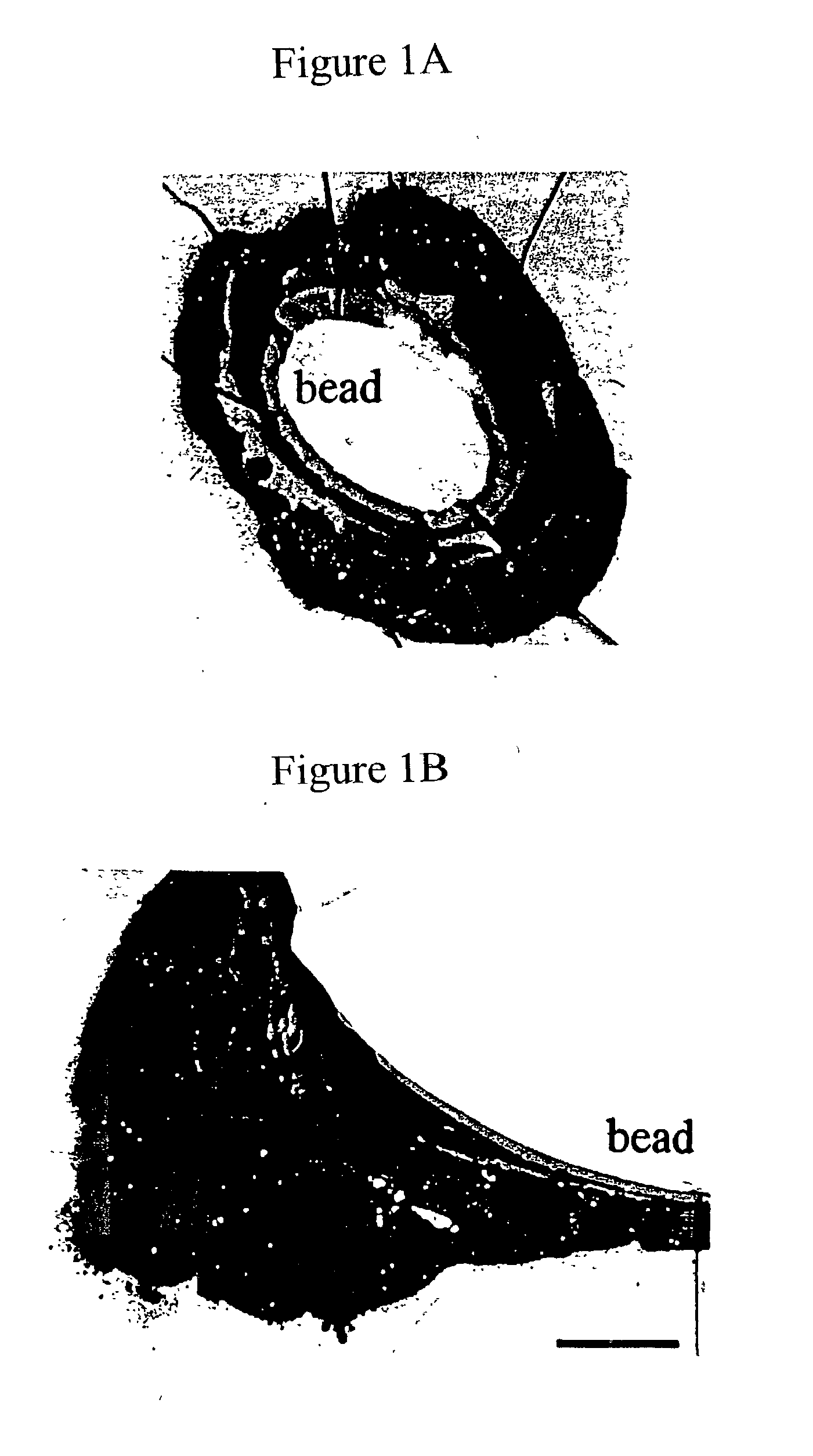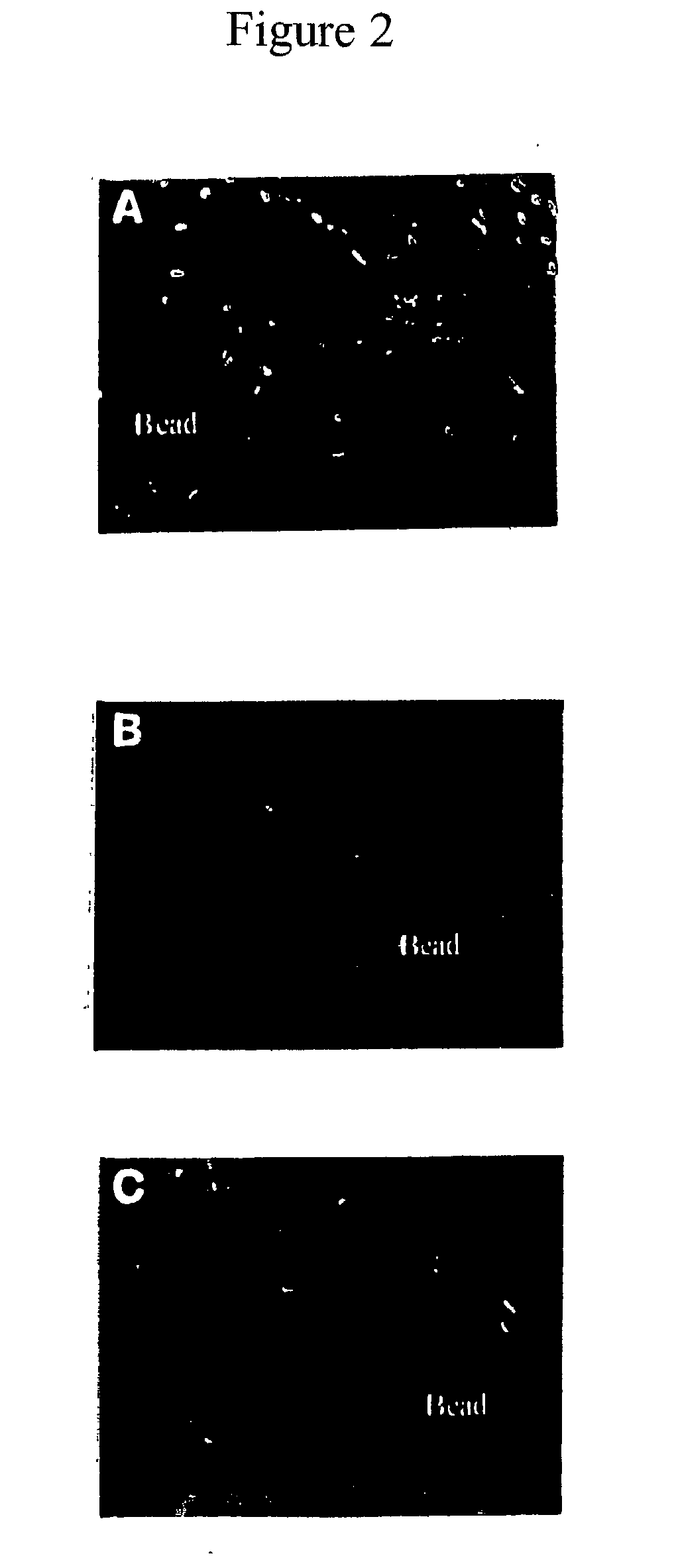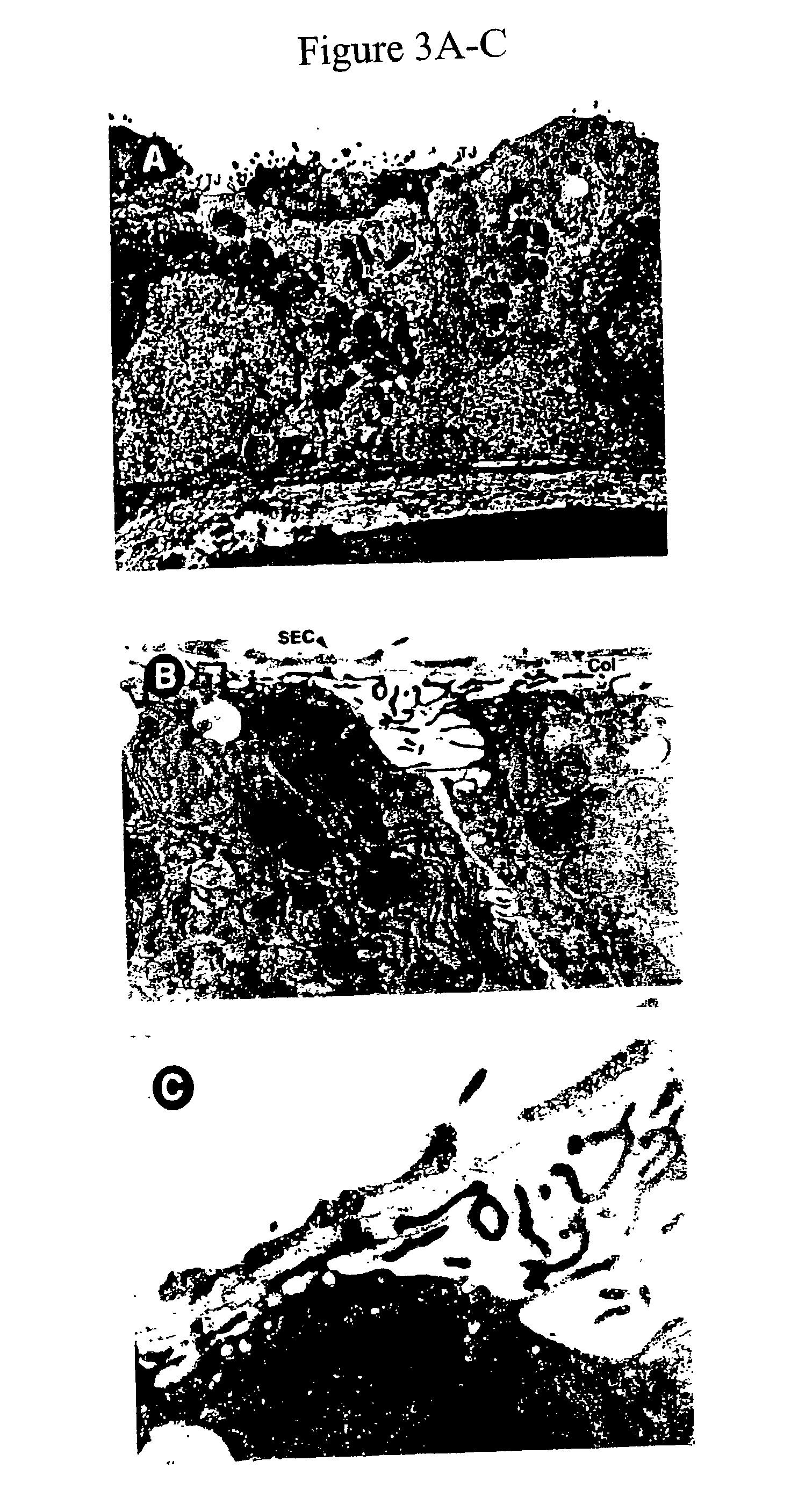Novel long-term three-dimensional tissue culture system
a three-dimensional, tissue culture technology, applied in the direction of artificial cell constructs, biocide, prosthesis, etc., can solve the problems of limited treatment, rapid gene expression decline, limited usefulness of this approach, etc., to achieve the effect of restoring liver function and alleviating the symptoms associated
- Summary
- Abstract
- Description
- Claims
- Application Information
AI Technical Summary
Benefits of technology
Problems solved by technology
Method used
Image
Examples
Embodiment Construction
[0049] The present invention relates to a novel tissue culture system that provides for long term culture of hepatocytes that retain their capacity to proliferate and express hepatic function. The invention provides compositions and methods for generating long term cultures of hepatocytes that can be used as bio-artificial livers for perfusion purposes. Alternatively, the hepatic cell culture systems may be implanted into a subject having a hepatic disorder to restore or supplement liver function.
[0050] The method of the present invention comprises the co-culturing of hepatocytes and nonparenchymal cells, in the presence of growth factors, corticosteroids and a matrix material coated with at least one biologically active capable of a molecule promoting cell adhesion, proliferation or survival, thereby, resulting in the formation of matrix / hepatic cell clusters. The method of the present invention may further comprise the mixing of the matrix / hepatic cell clusters with a second matri...
PUM
| Property | Measurement | Unit |
|---|---|---|
| time | aaaaa | aaaaa |
| concentration | aaaaa | aaaaa |
| concentration | aaaaa | aaaaa |
Abstract
Description
Claims
Application Information
 Login to View More
Login to View More - R&D
- Intellectual Property
- Life Sciences
- Materials
- Tech Scout
- Unparalleled Data Quality
- Higher Quality Content
- 60% Fewer Hallucinations
Browse by: Latest US Patents, China's latest patents, Technical Efficacy Thesaurus, Application Domain, Technology Topic, Popular Technical Reports.
© 2025 PatSnap. All rights reserved.Legal|Privacy policy|Modern Slavery Act Transparency Statement|Sitemap|About US| Contact US: help@patsnap.com



